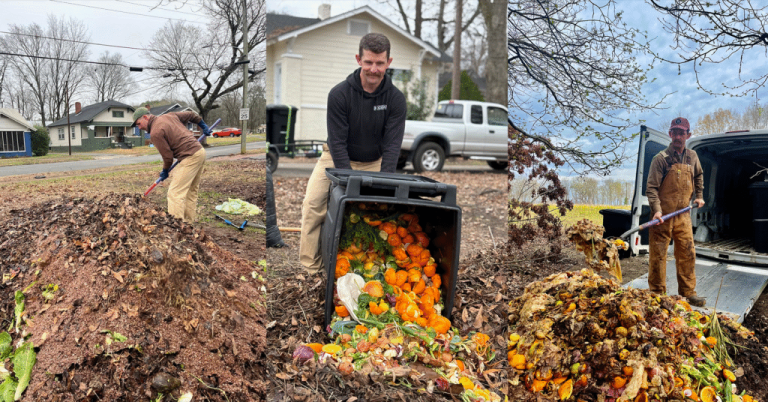Rare Eastern Indigo Snake making a comeback in Alabama. Here is how it happened. (PHOTOS)
Reading time: 5 minutes

Last week, officials at the Alabama Wildlife and Freshwater Fisheries Division announced on social media the discovery of the second Eastern Indigo Snake to hatch in the wild in the state of Alabama in over 60 years. The recent breakthrough caps a decade-long effort to re-establish the species.
So, how did they do it? Here is the story.
What is the Eastern Indigo Snake?
One of the largest snakes in North America, the rare non-venomous Eastern Indigo Snake disappeared from the Yellowhammer State in the 1950s. An apex predator, the snake lives primarily in fire-dependent longleaf pine ecosystems. Unfortunately, by the middle of the 1900s, we had wiped out much of the state’s longleaf pine forests. As a result, the aptly named indigo snake—with its glossy black color and rich blue and purple highlights—faded away from the landscape.
Bringing Back the Snake
Some five decades after its disappearance from Alabama, a movement was started to restore longleaf forests in the state. As a result, scientists began working on ways to bring the indigo snake back.
“With all of the ongoing longleaf restoration efforts, it seemed important to try to bring this snake back to Alabama, and back into the longleaf ecosystem because it was an important part of the ecosystem,” Jim Godwin, zoologist at the Natural Heritage Program on the Auburn University campus told The Bama Buzz.

“The idea was to release snakes, in one place, the Conecuh National Forest, because the US Forest Service has an ongoing restoration effort for longleaf and they have gopher tortoises. The indigo snake relies upon gopher tortoise burrows in the winter as a refuge.”
The effort to restore the snake really took off in 2010, when the first indigo snakes were released into the wild within the Conecuh National Forest. Since then, over 200 indigo snakes have been released.
“We’ve released a little over 200 snakes,” Godwin added. “We’re assuming the snakes are going to be functioning as they should in the wild and they would be breeding and the young would be surviving. But, because they are snakes they’re very difficult to study. So we developed a series of measures of success to give us an idea as to whether or not our efforts were successful.”
Godwin described the benchmarks and results:
- Do we see snakes surviving from one year to another? Yes, the scientists have recaptured the snakes in the general area inside the National Forest boundaries.
- Do they stay in the same area? Yes, the scientists have observed the snakes are using the same gopher tortoise burrows year after year.
- Is there evidence of indigo snakes preying on other snakes? Biologists have seen indigo snakes capturing and feeding on snakes, such as copperheads.

“What we really needed as a solid measure of success was to find a young snake that was indisputably born in the wild,” said Godwin. “All the snakes that we release are marked with a pit tag (an id similar to what is used with cats and dogs). When we recapture the snake, we can take our pit tag reader and scan the snake. We know exactly which snake you know we have in hand.”
The Breakthrough
Bottom line, if scientists find an indigo snake in the wild without a tag, that means it was likely born in the wild. The first such discovery happened in 2018. The second—the week of March 17, 2022.
That’s why everyone is excited. Because of the snake’s small size and lack of a tag, the snakes are very likely successfully reproducing in the wild.
Why Bringing Back the Indigo Snake Matters

If the Eastern Indigo Snake starts breeding in the Conecuh, it will be a game-changer for the snake in Alabama and the Gulf Coast.
“If we’re successful in Alabama and the Conecuh, these snakes will eventually find their way into nearby Blackwater River State Forest, perhaps Eglin Air Force Base,” said Godwin. “We could truly bring back to our portion of the Gulf Coast a viable population of the indigo snake.”
Godwin concluded our interview by noting partnership that has worked on this project for a decade and a half.
The groups include:
- Alabama Department of Conservation and Natural Resources
- U.S. Forest Service
- Orianne Center for Indigo Conservation
- Central Florida Zoo
- U.S. Fish and Wildlife Service
“This snake is sort of a wildlife ambassador. Because it is such an impressive snake and a docile species they are used quite often in educational programs. The local residents around Conecuh are aware of what’s going on and they appreciate the recovery efforts.”
Want to stay up to date on the Eastern Indigo Snake’s recovery? Subscribe to our newsletter & keep up with us on social media

 10570 views
10570 views

